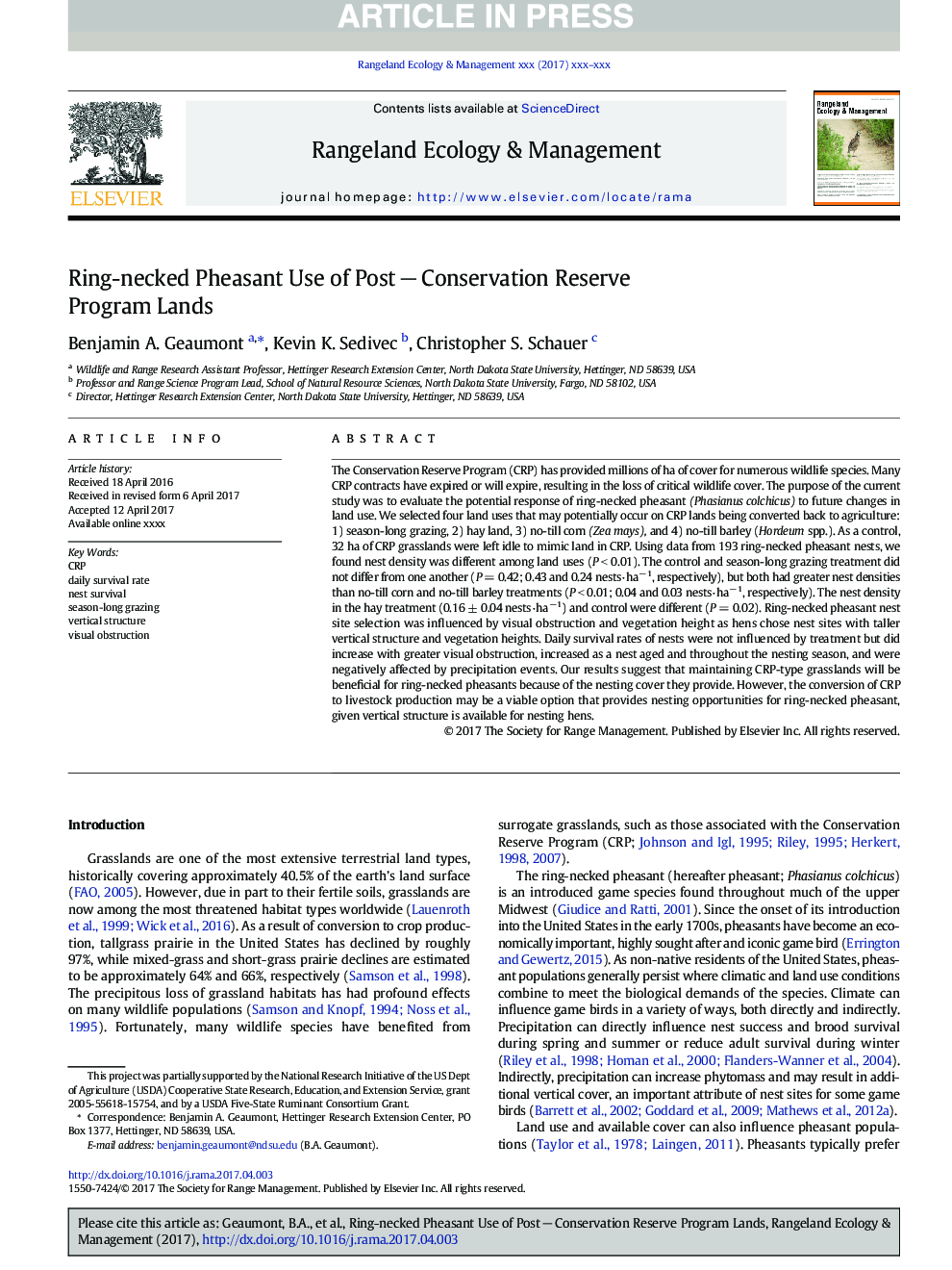| کد مقاله | کد نشریه | سال انتشار | مقاله انگلیسی | نسخه تمام متن |
|---|---|---|---|---|
| 5745202 | 1412388 | 2017 | 7 صفحه PDF | دانلود رایگان |
عنوان انگلیسی مقاله ISI
Ring-necked Pheasant Use of Post â Conservation Reserve Program Lands
دانلود مقاله + سفارش ترجمه
دانلود مقاله ISI انگلیسی
رایگان برای ایرانیان
کلمات کلیدی
موضوعات مرتبط
علوم زیستی و بیوفناوری
علوم کشاورزی و بیولوژیک
علوم کشاورزی و بیولوژیک (عمومی)
پیش نمایش صفحه اول مقاله

چکیده انگلیسی
The Conservation Reserve Program (CRP) has provided millions of ha of cover for numerous wildlife species. Many CRP contracts have expired or will expire, resulting in the loss of critical wildlife cover. The purpose of the current study was to evaluate the potential response of ring-necked pheasant (Phasianus colchicus) to future changes in land use. We selected four land uses that may potentially occur on CRP lands being converted back to agriculture: 1) season-long grazing, 2) hay land, 3) no-till corn (Zea mays), and 4) no-till barley (Hordeum spp.). As a control, 32 ha of CRP grasslands were left idle to mimic land in CRP. Using data from 193 ring-necked pheasant nests, we found nest density was different among land uses (P < 0.01). The control and season-long grazing treatment did not differ from one another (P = 0.42; 0.43 and 0.24 nests â haâ 1, respectively), but both had greater nest densities than no-till corn and no-till barley treatments (P < 0.01; 0.04 and 0.03 nests â haâ 1, respectively). The nest density in the hay treatment (0.16 ± 0.04 nests â haâ 1) and control were different (P = 0.02). Ring-necked pheasant nest site selection was influenced by visual obstruction and vegetation height as hens chose nest sites with taller vertical structure and vegetation heights. Daily survival rates of nests were not influenced by treatment but did increase with greater visual obstruction, increased as a nest aged and throughout the nesting season, and were negatively affected by precipitation events. Our results suggest that maintaining CRP-type grasslands will be beneficial for ring-necked pheasants because of the nesting cover they provide. However, the conversion of CRP to livestock production may be a viable option that provides nesting opportunities for ring-necked pheasant, given vertical structure is available for nesting hens.
ناشر
Database: Elsevier - ScienceDirect (ساینس دایرکت)
Journal: Rangeland Ecology & Management - Volume 70, Issue 5, September 2017, Pages 569-575
Journal: Rangeland Ecology & Management - Volume 70, Issue 5, September 2017, Pages 569-575
نویسندگان
Benjamin A. Geaumont, Kevin K. Sedivec, Christopher S. Schauer,